Thrustmaster Ferrari 488 GT3 Wheel Add-On – Review
With the Ferrari 488 GT3 Wheel Add-On, Thrustmaster is finally offering the first steering wheel that is directly compatible with the new T818 Wheel Base. In this review, you can find out how the steering wheel performs in practice and what surprises it has in store for DIY enthusiasts.
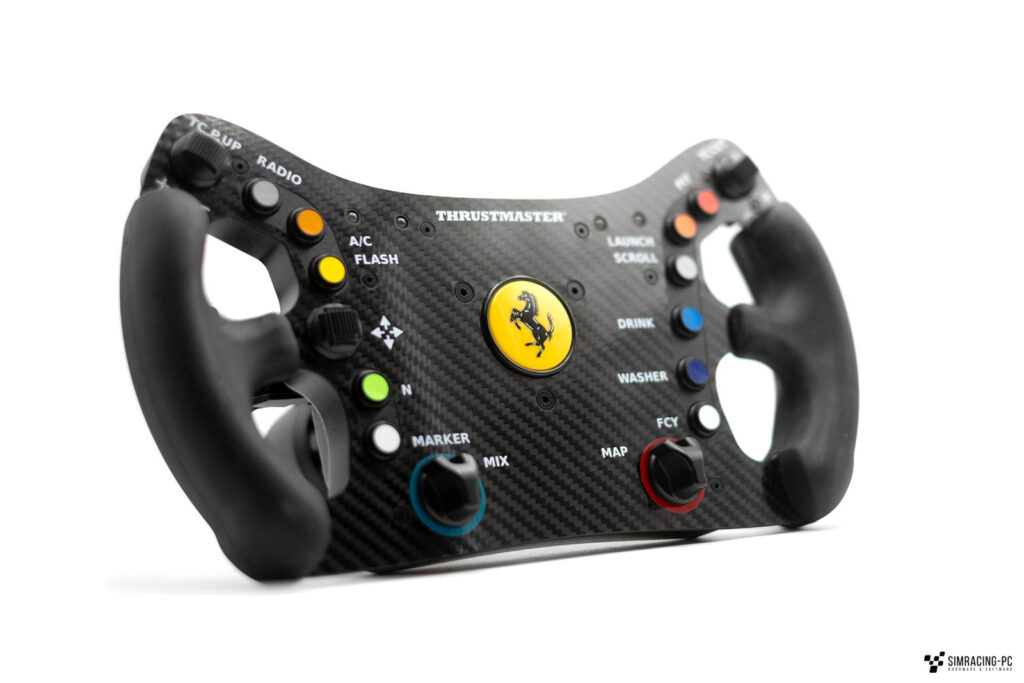
Ordering and shipping
many major electronics retailers as well as from Thrustmaster itself. Depending on the offer and discount, prices are usually between €240 and €300. Delivery times vary accordingly from retailer to retailer. However, there is usually always a supplier who has the Ferrari 488 GT3 Wheel Add-On directly in stock.
Technical data
The steering wheel was developed by Thrustmaster with very low weight in mind and uses almost no aluminium components apart from the front plate and parts of the shifters. The front plate is covered with carbon fibre and the steering wheel is reinforced in various other places. Overall, the steering wheel is still very sturdy as a result, but of course not entirely competitive with the last models tested. However, these are also all more expensive and weigh considerably more than the 31 centimetre Ferrari 488 GT3 Wheel Add-On, which is extremely light at around 850 grams without QR.
- Dimensions: 31 x 17.5 x 7.5 cm
- Weight:
- Steering wheel: ~875g
- QR (new): ~150g
- QR (old): ~126g
Scope of delivery
Thrustmaster includes two QRs with the new steering wheel. The classic screw-in QR for the older wheel bases and the new QR for the T818 wheel base. Tools and self-adhesive pads are also included. Only a USB-C cable, which is required for a possible firmware upgrade, is not included
- Ferrari 488 GT3 Wheel Add-On
- Quick Release for bolt-on base
- Quick Release for locking base (T818)
- Self-adhesive pads
- Allen key
- Warranty booklet
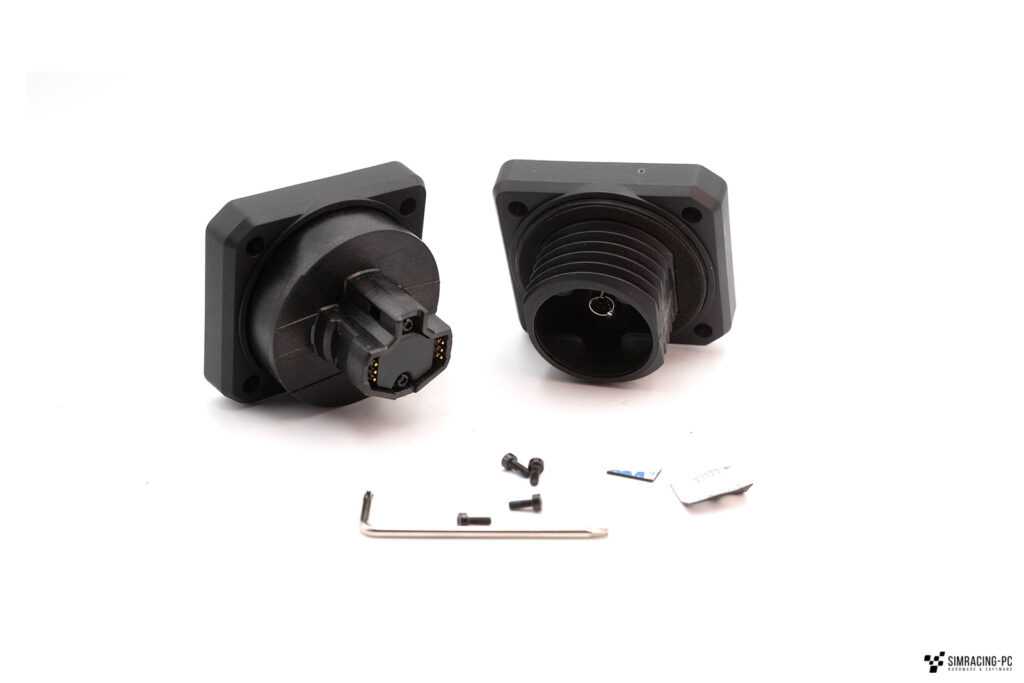
Compatibility
The Ferrari 488 GT3 Wheel Add-On is compatible with all current Thrustmaster wheel bases:
- Old QR
- T-GT / T-GT II Servo Base,
- T300 RS Servo Base
- TS PC Racer
- TS-XW
- TX Racing Wheel Servo Base
- TS-XW Servo Base
- New QR
- T818
- T818 Ferrari SF1000
- Future Wheel Bases
Features
Buttons
Although the steering wheel is a replica of the real Ferrari steering wheel from the Ferrari 488 GT3, Thrustmaster deviates slightly from the controls of the original in favour of functionality and integrates a 4-way joystick on the left-hand side:
- 11 buttons, which are mounted directly on the PCB and are each supported by four ribs on the caps to prevent twisting. In terms of feel, they definitely don’t have to hide from higher-priced steering wheels
- 2 encoders with additional push function in the lower area of the wheel, which are in the mid-range in terms of release force, but were also very well chosen for a steering wheel in this price range.
- 2 thumb encoders, which were realised by a clever combination of two buttons each on the PCB. The chosen positioning makes them very comfortable to use and a successful change from the usual thumb encoders with a rotary wheel.
- 1 four-way joystick, which, like the two thumb encoders, was realised using individual buttons for each direction. Even if it does not come close to the comfort of a FunkySwitch, it is still a clear gain over the original two-way switches.
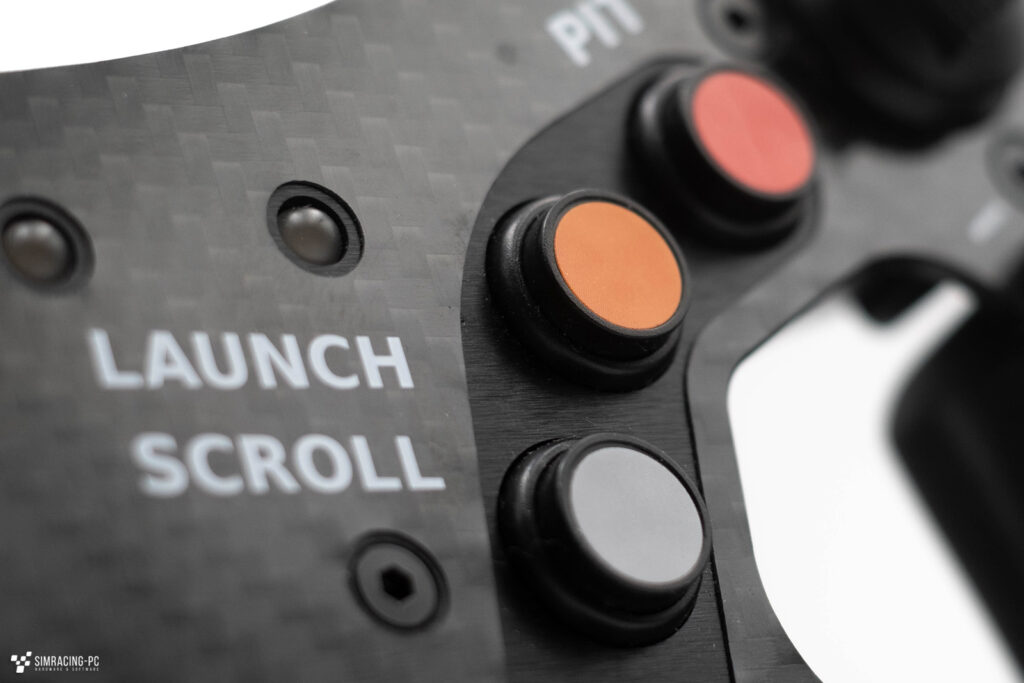
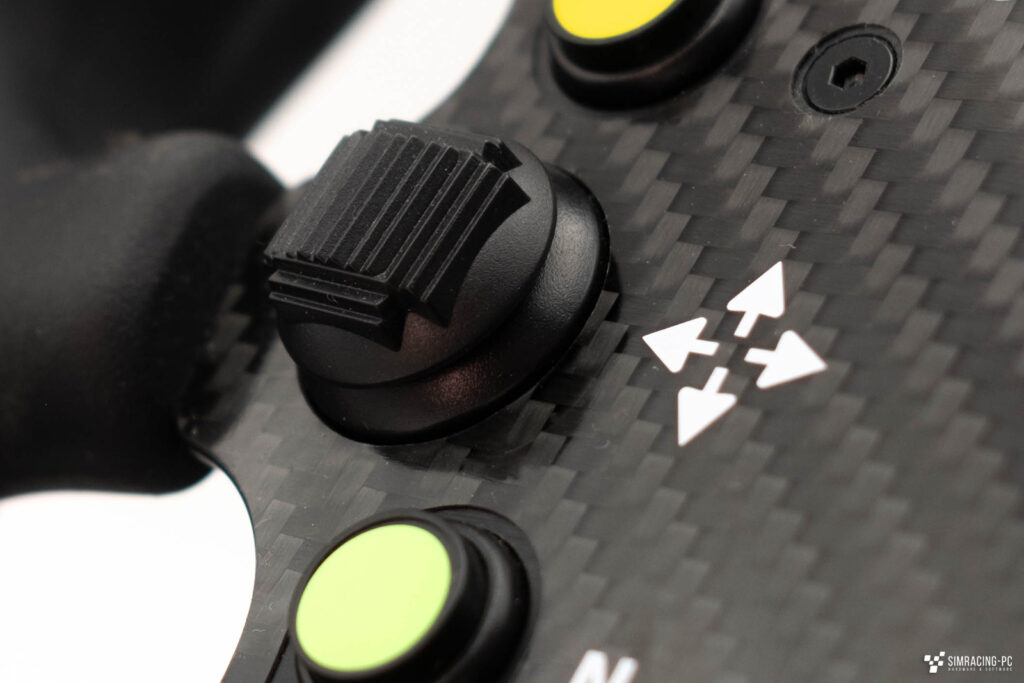
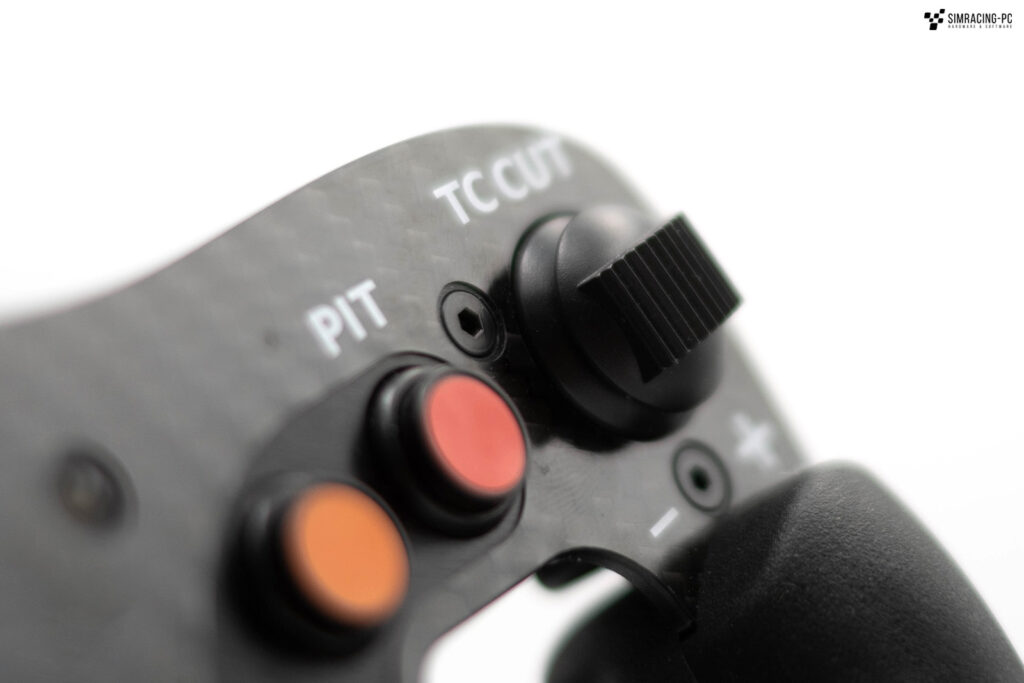
LEDs
The Ferrari 488 GT3 Wheel Add-On has four RGB LEDs in the upper area, which are divided into two RPM LEDs (by colour change), a flag LED and a PIT LED. These are currently only designed for operation on a PC or PlayStation console and therefore cannot be used on an Xbox. Button combinations on the steering wheel can also be used to control the brightness and switch between GT and Formula mode.
However, the LEDs are not individually configurable, as we are now used to from most steering wheels thanks to Simhub. In addition, the RPM function with only two LEDs is more of a gimmick than a real shifting aid.

Shifter
The magnetic paddle shifters are probably the biggest positive surprise on the steering wheel. A clever combination of plastic and aluminium ensures virtually flex-free paddles, the characteristics of which can also be changed using adhesive pads. The trigger feel is firm out of the box, without being particularly loud. If you attach the pads on both sides, the noise is dampened somewhat, but the shifter also loses some of the required actuation force.
Overall, the shifters are designed very well for the price range. This is also emphasised by the two adjustment options (distance to the centre and distance to the rear of the steering wheel).
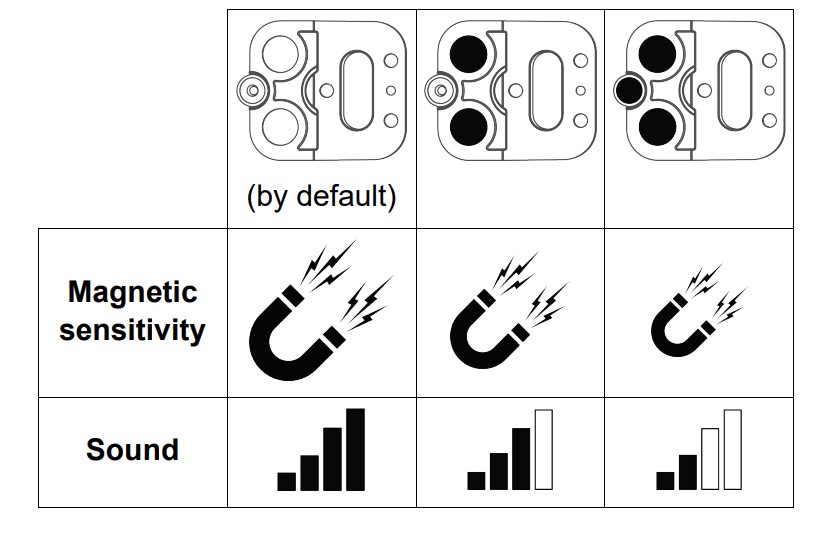

Quick Release
As already mentioned, Thrustmaster supplies two QRs with the package. These can be firmly connected to the steering wheel with four screws each. In addition, the data cable integrated in the QR must be wired to the corresponding connection on the back of the steering wheel. All in all, installation is completed in just a few minutes.
Even though the new QR is a significant improvement on the old screw-in version, the current QRs are in some cases far inferior to their direct-drive competitors. These are simply much more torsion-resistant and also of higher quality (the QRs are generally made of metal).
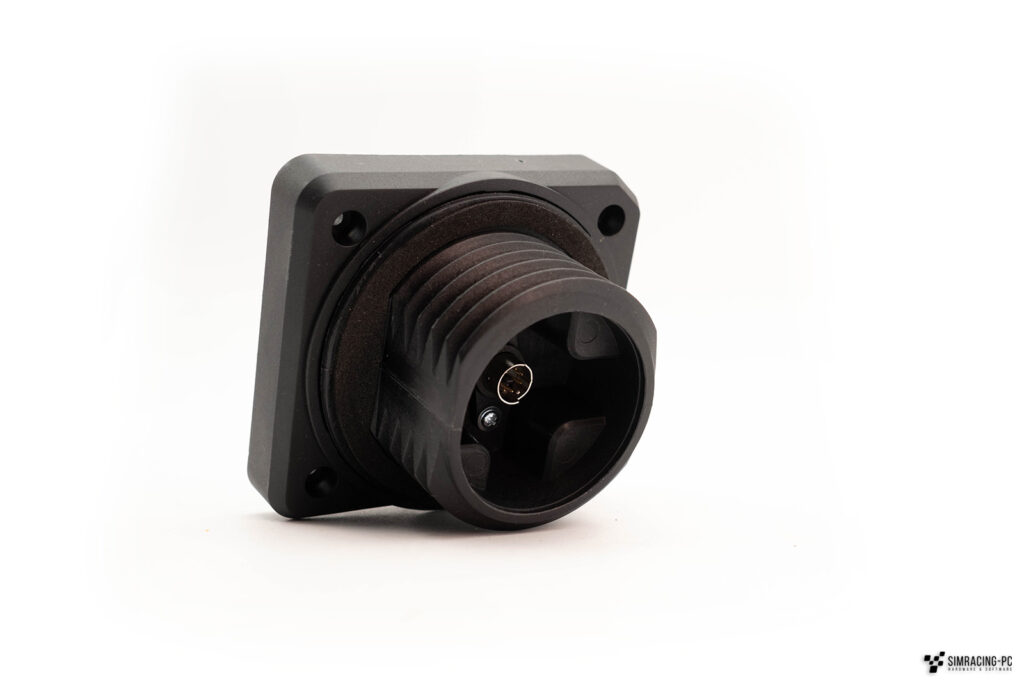
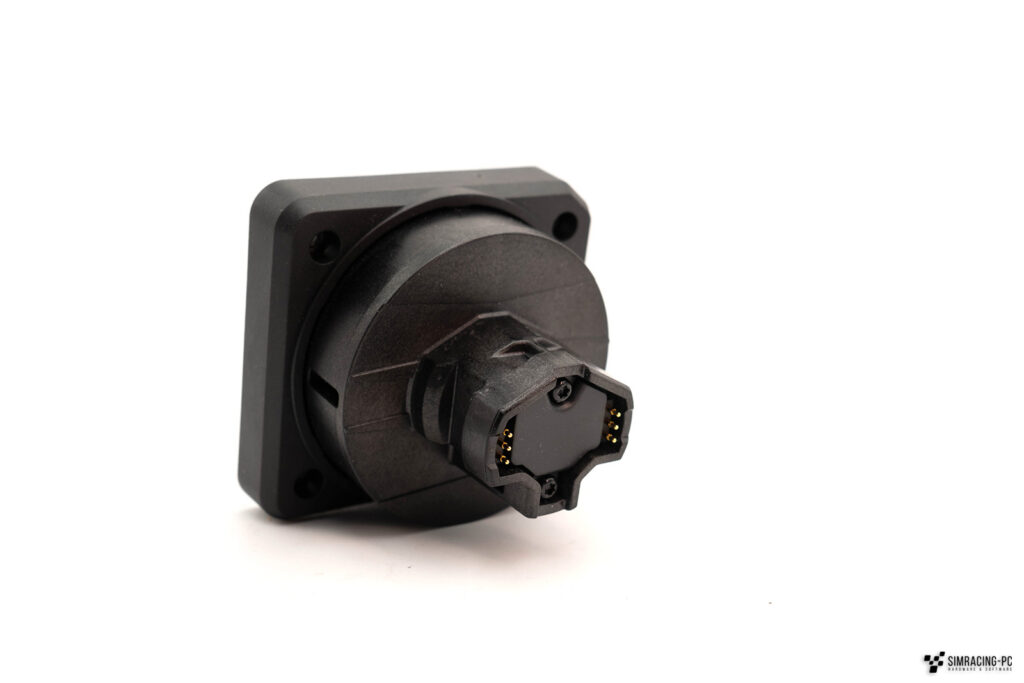
Grips
Thrustmaster uses a relatively hard and smooth plastic for the grips. Although these are basically ergonomically shaped and fit well in the hand, they do not offer the same comfort and grip as much softer rubber grips (such as the grips on the McLaren Artura Pro steering wheel from Ascher Racing, which we tested last time).
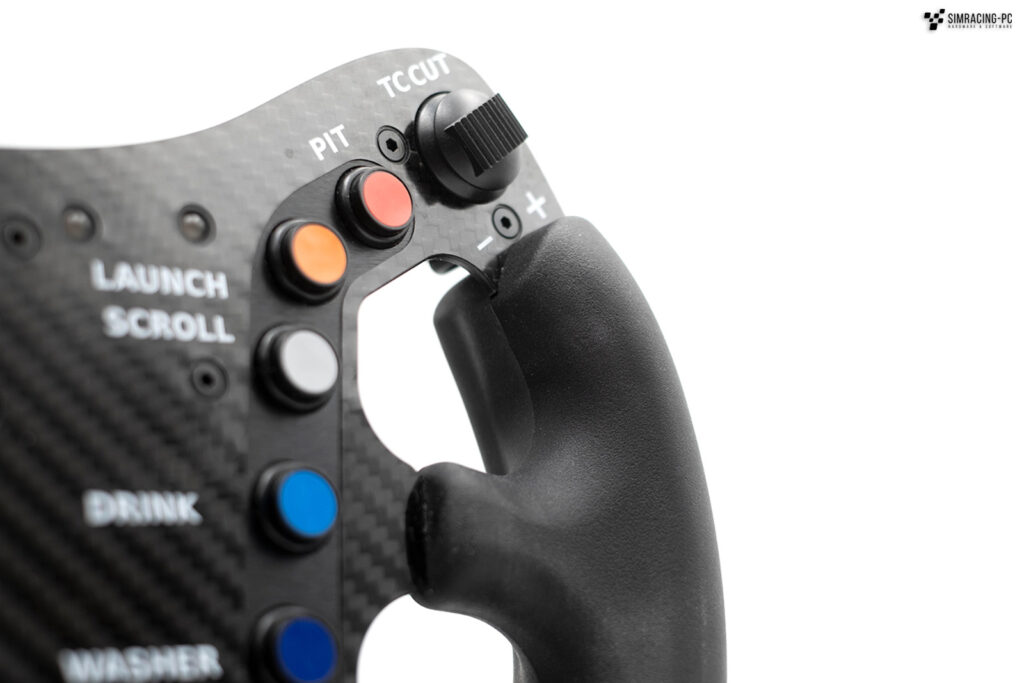
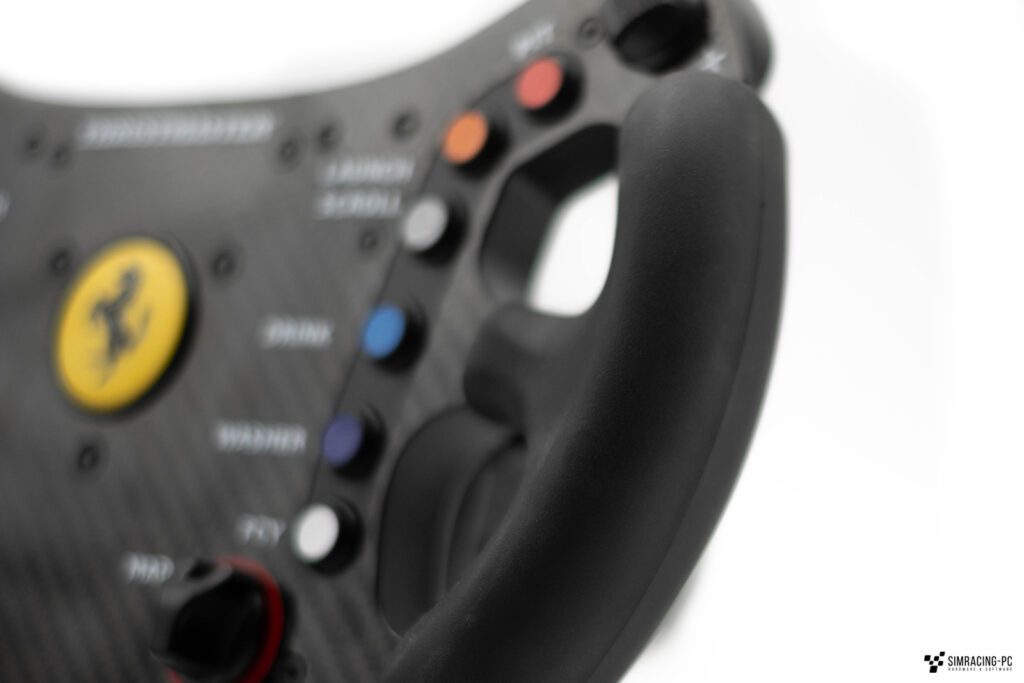
DIY
There is a USB-C port on the back of the wheel, which is actually intended for firmware upgrades. However (as of January 2024, future firmware upgrades may change this), this also offers the surprising option of connecting the Ferrari 488 GT3 Wheel Add-On directly to the PC without any Thrustmaster software. The steering wheel is then directly recognised as a game controller and can therefore be used in virtually any current simulation. As an additional gimmick, the two shifters can theoretically be used twice. On the one hand, the “click” of the shifter is detected normally from approx. 50% of the travel and, on the other hand, there is an additional analogue axis for each paddle that reflects the travel (measured by the Hall sensor). In combination with software such as vJoy, for example, a double clutch can be configured as an alternative to the normal function as paddle shifters.
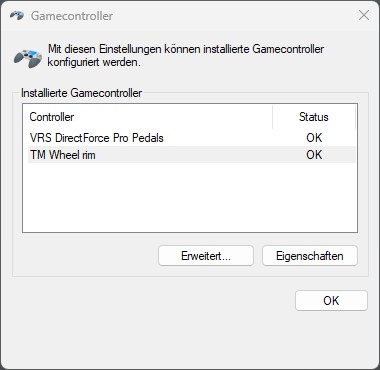

Due to the USB-C connection, only a physical adapter is required for operation on a non-TM base in order to fit a corresponding quick release. For the test, for example, the 488 GT3 Wheel Add-On was connected directly to a QR from Asetek using an adapter from the 3D printer and the USB-C cable was connected internally. Only the steering wheel LEDs do not work in this mode.
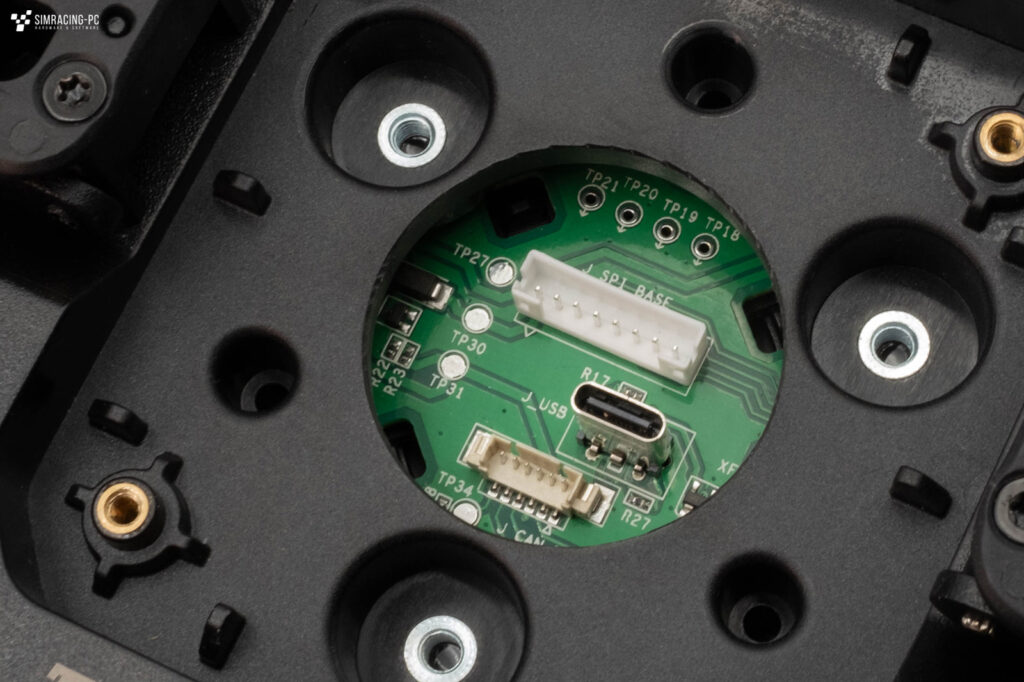
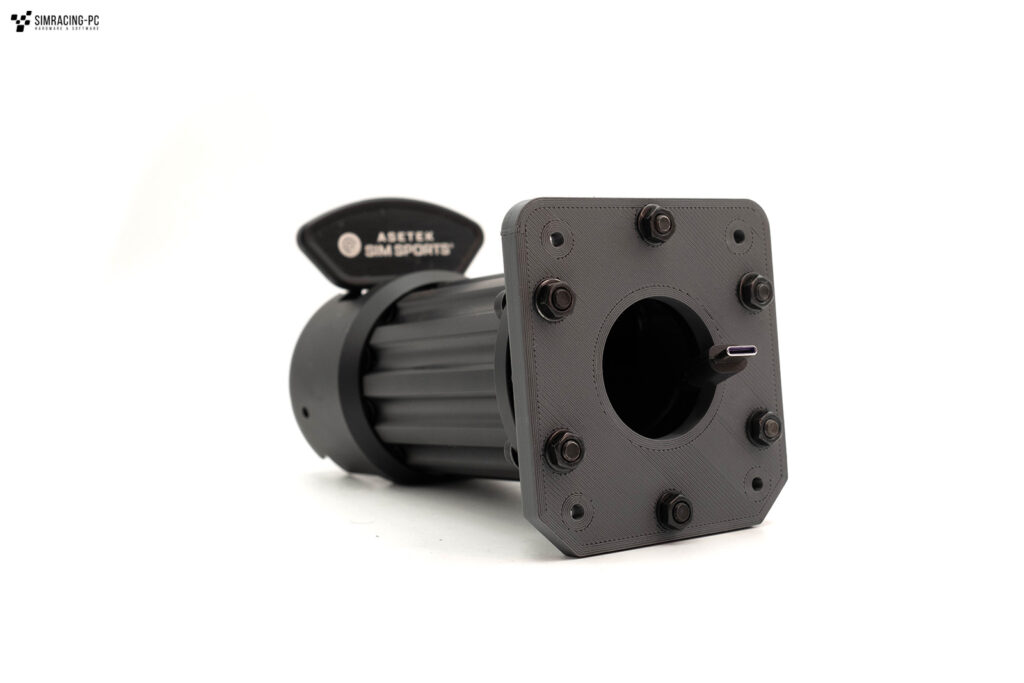
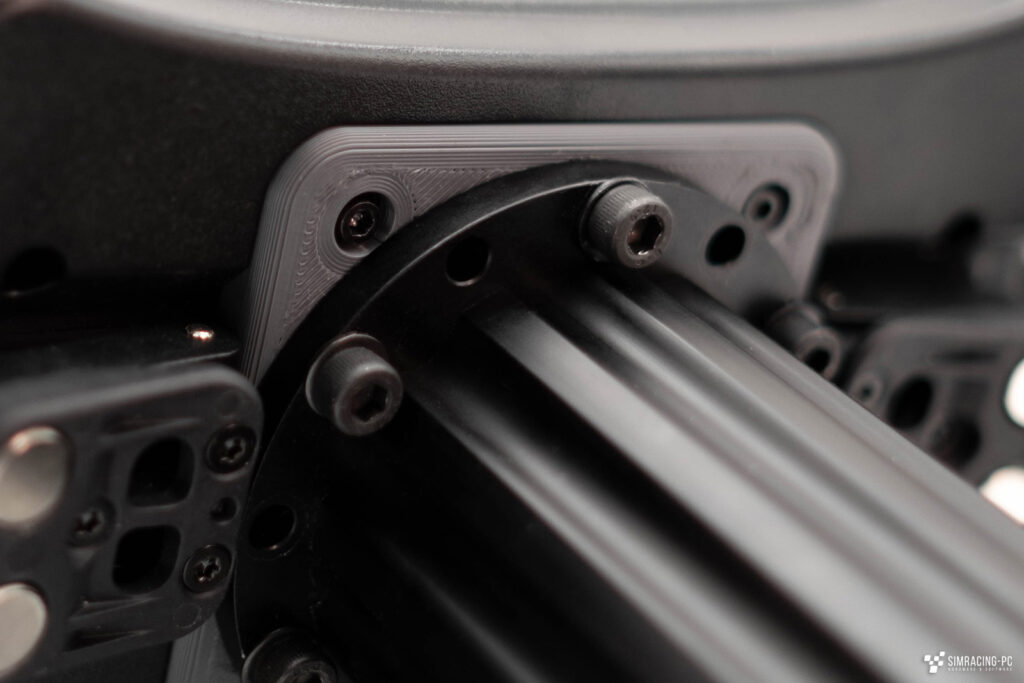
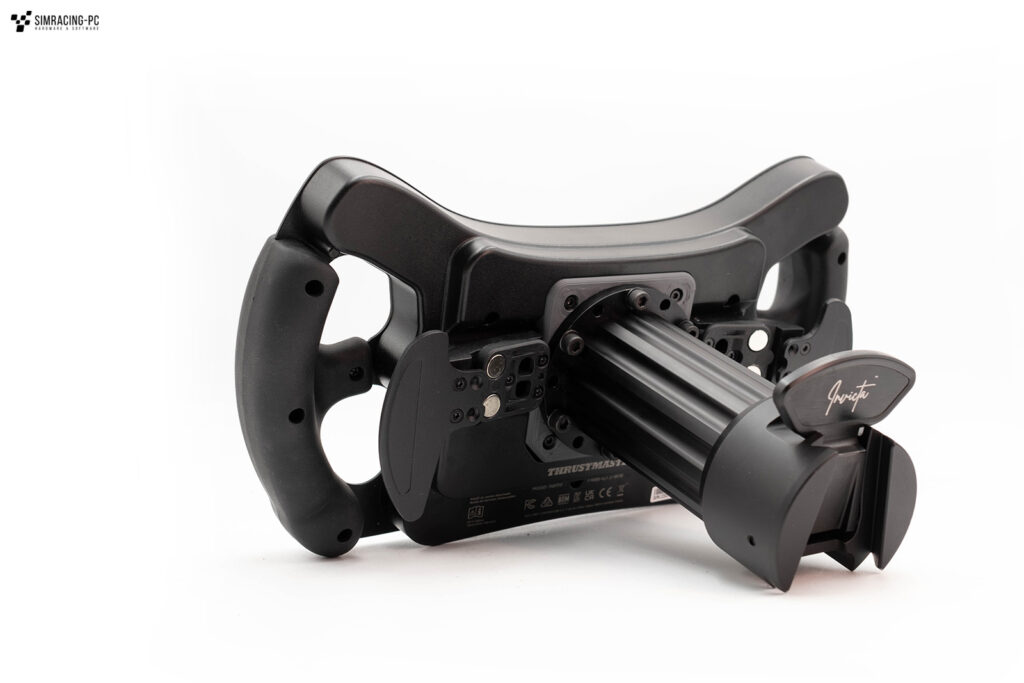
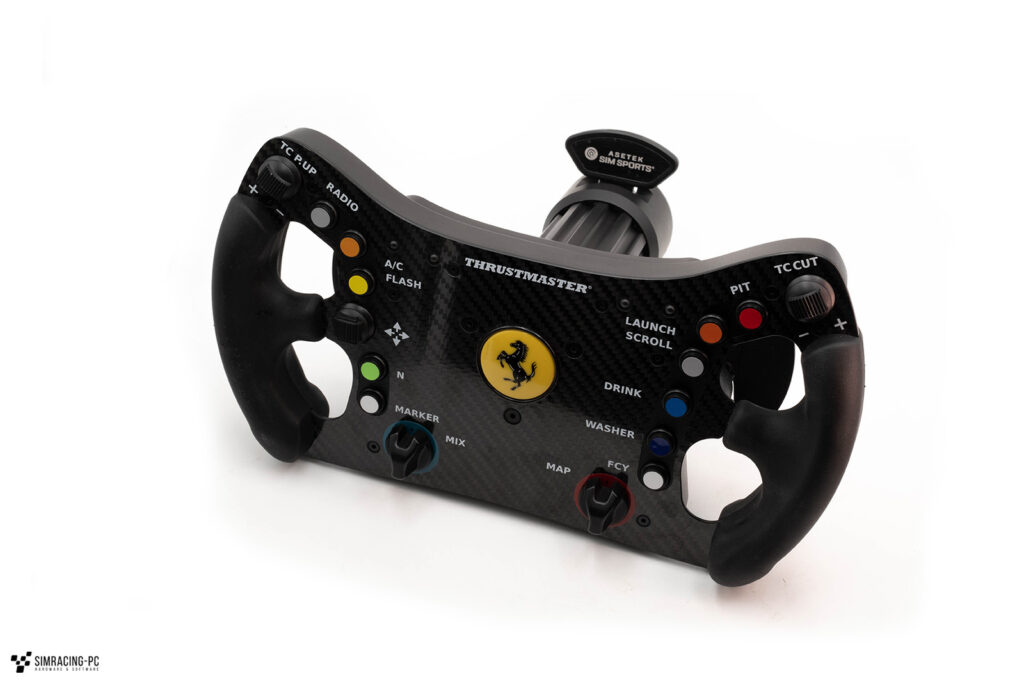
Driving impression
The steering wheel was thoroughly convincing during the review and, in combination with an Asetek Forte Base (18NM), did not suffer any failures or other recognisable weaknesses. Only the long-term comfort is not optimal if you don’t want to use gloves. With an overall diameter of 31 centimetres, the steering wheel is more predestined for the GT sector, but can also be used for Formula/LMP cars. The two thumb encoders and the four-way joystick, which were used in the Assetto Corsa Competizione to quickly adjust the traction control and brake balance, were particularly notable in long-term use.
Conclusion
All in all, the Ferrari 488 GT3 Wheel Add-On is probably the most attractive steering wheel available from Thrustmaster at the moment. Both the size and the build quality make it a successful all-rounder. Given the price, the choice of materials and the quality of build are definitely on a high level. The biggest positive surprises are without doubt the magnetic shift paddles and the USB port on the back of the steering wheel, which is very interesting for DIY enthusiasts.
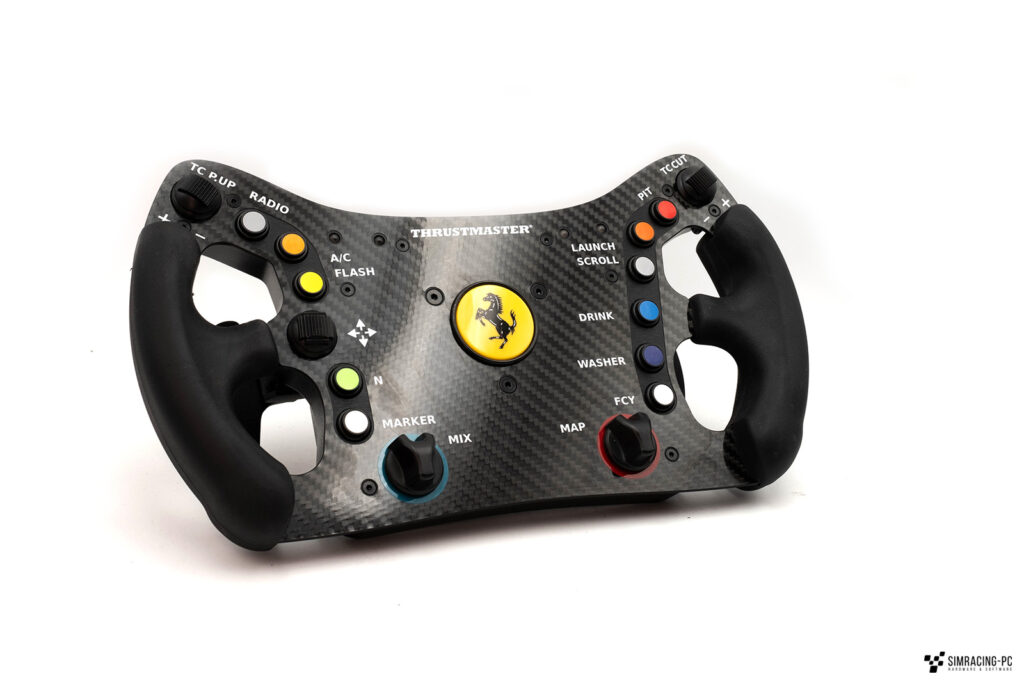
Pros
- Price/performance ratio
- Scope of delivery
- Magnetic paddle shifters
- Buttons
- Quick Release with wireless power and data transmission
Cons
- Adjustability of LEDs
- Grip material
- Quality of the QRs











